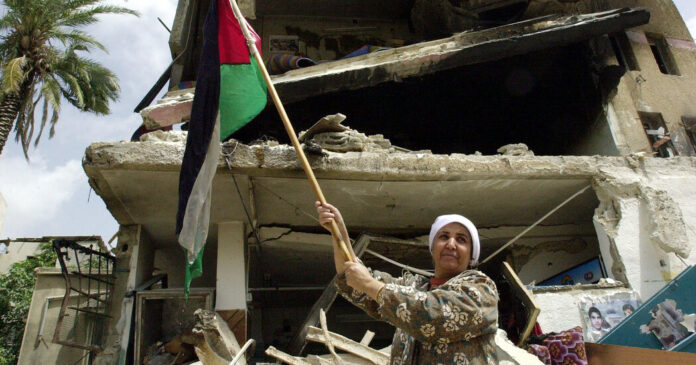Jenin, a focal point of Israel’s wide-ranging raid into the West Bank on Wednesday, is a potent symbol of rebellion and militancy for Palestinians after decades of defiance against occupying powers.
That history dates back to British rule of Palestine during what was known as the Arab Revolt of the 1930s, and through the 1948 Arab-Israeli war surrounding the creation of the modern Israel and triggered the flight or expulsion of hundreds of thousands of Palestinians.
But Jenin’s resonance today, both for Palestinians and Israelis, largely stems from the second intifada, or uprising, against the Israeli occupation in the early 2000s.
Israelis remember Jenin, which sits in the rolling hillsides of the northern West Bank, as a source of dozens of suicide bombers sent into Israel at that time.
Palestinians remember a 10-day battle, known as the Battle of Jenin, in 2002 between Palestinian militants and Israeli forces. Israel killed 52 people, of which up to half may have been civilians, according to the United Nations in a report on the event. The fighting killed 23 Israeli soldiers.
Yasir Arafat, the late Palestinian leader, dubbed the camp “Jeningrad,” a reference to the Battle of Stalingrad in World War II.
Palestinian officials called the Israeli assault a massacre — a claim that was rejected by the United Nations in its report, though it criticized both sides as putting Palestinian civilians at risk. Nonetheless, the attack is widely remembered as such to Palestinians.
During the period of British administration, Jenin was a stronghold of rebellion against colonial rule and the wave of Jewish immigration to Palestine. British forces blew up a quarter of the town in 1938 after one of their officers there was killed.
In the wake of the 1948 war, Jenin became known as a town that never surrendered, after Palestinian fighters, backed by Iraqi soldiers, repelled an Israeli attempt to take Jenin.
It also was home to one of the original refugee camps set up for Palestinians displaced by that war. Although all of these sites are still called “camps” to recognize the displacement of the residents’ ancestors, the areas are actually ramshackle neighborhoods of apartment blocks and roads, usually of poor quality.
In more recent years, the Jenin refugee camp has frequently been a target for raids by Israeli forces. In addition to widespread violence in Jenin, the camp is considered by the United Nations to have the highest rates of unemployment and poverty in the West Bank.
Both Hamas, which controls Gaza, and the militant group Islamic Jihad have recruited in Jenin. But in recent years, the ranks of the militants have been joined by newer, loosely affiliated militias that emerged among a younger generation that is frustrated with a Palestinian leadership they see as corrupt and enabling of the Israeli occupation.
Israeli officials say that more than 50 shooting attacks on Israelis have emanated from the Jenin area this year. Violence has surged in the West Bank amid Israel’s war in Gaza. Israeli forces say they are fighting off efforts to move arms into the West Bank, but Jewish settlers have also escalated attacks and expanded settlements.
Read More: Jenin, a Target of Israeli Raids, Is a Symbol of Defiance for Palestinians


